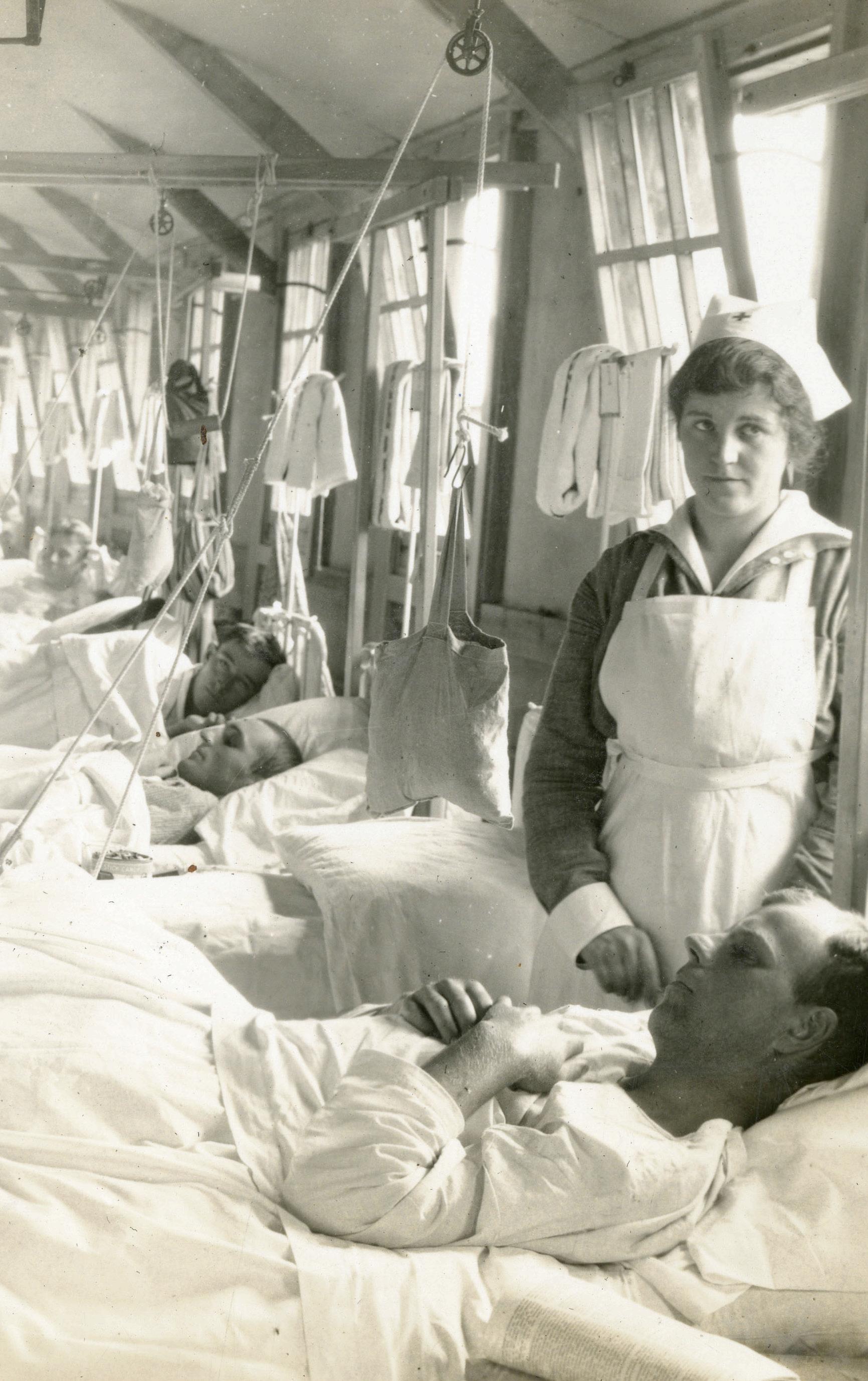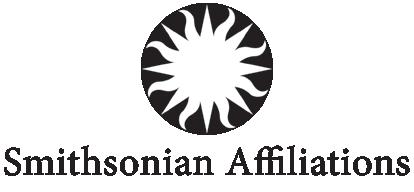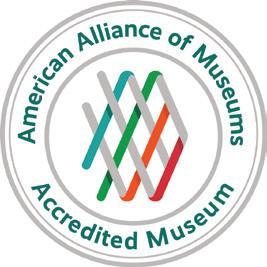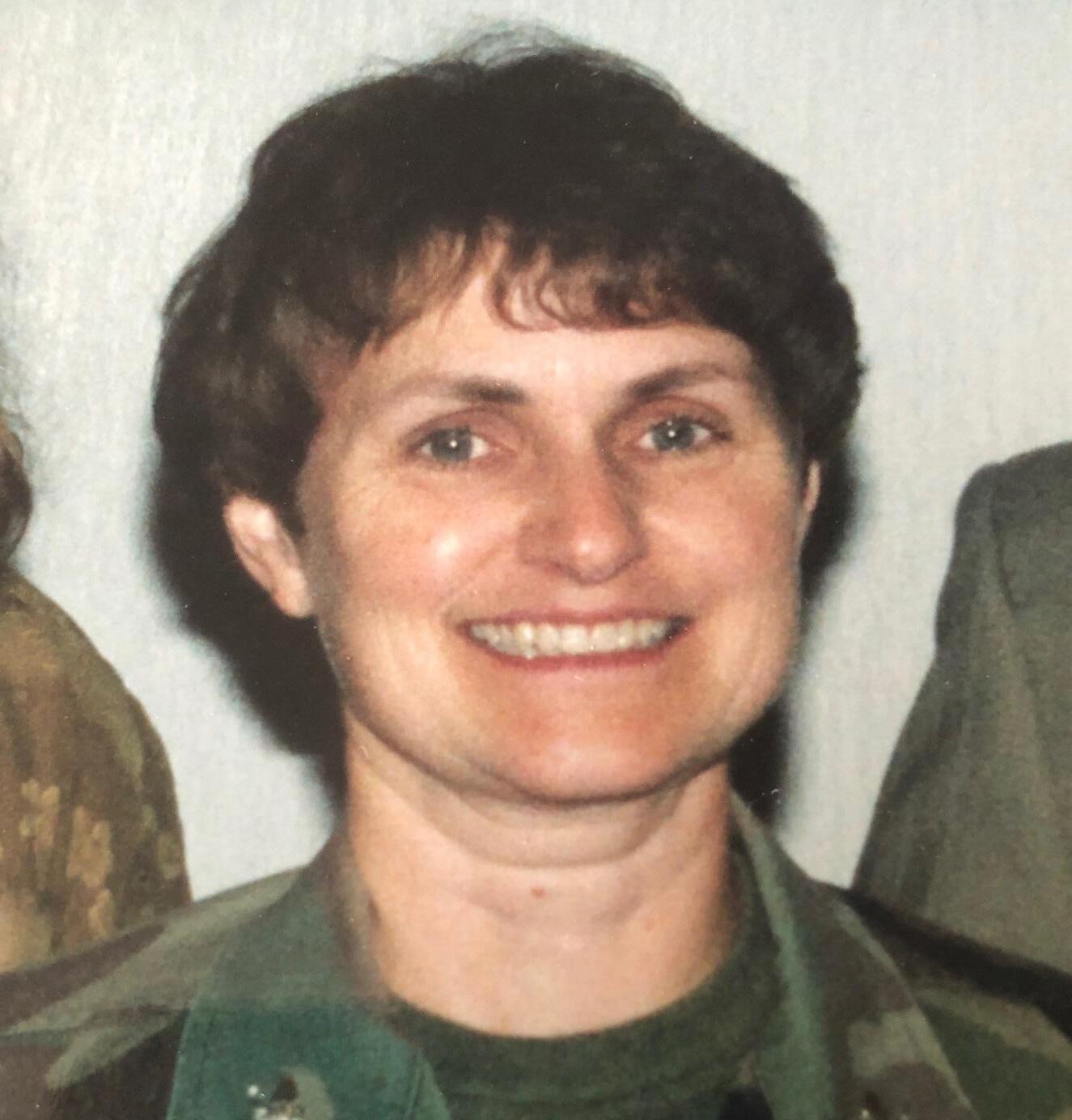
WWW.WISVETSMUSEUM.COM 1 BU G
THE SUMMER 2020 | VOLUME 27:2
LE

7 | FROM THE DIRECTOR 8 | FROM THE COLLECTION 10 | VE AND VJ DAY ACCOUNTS 16 | TEMPORARY EXHIBIT CLOSES 18 | CEMETERY TOURS 20 | NEW EXHIBIT COMING SOON 22 | EVERY VETERAN IS A STORY 27 | CALENDAR OF EVENTS 28 | FROM THE FOUNDATION 30 | VOLUNTEER SPOTLIGHT 31 | THANK YOU DONORS CONTENTS “Scenes About Camp: Ward" Base Hospital 22, from the Base Hospital 22 Collection WVM.0500.I048
MUSEUM STAFF
DIRECTOR
CHRISTOPHER L. KOLAKOWSKI 608.266.1009
ASSISTANT DIRECTOR
JENNIFER VAN HAAFTEN 608.261.6802
OPERATIONS ASSISTANT
ELISE MCFARLANE 608.261.0534
ORAL HISTORIAN
LUKE SPRAGUE 608.261.0537
CURATOR OF HISTORY
KEVIN HAMPTON 608.261.5409
PROCESSING ARCHIVIST
BRITTANY STROBEL 608.800.6958
COLLECTIONS MANAGER
ANDREA HOFFMAN 608.800.6957
REFERENCE ARCHIVIST
RUSS HORTON 608.267.1790
REGISTRAR
SARAH KAPELLUSCH 608.800.6955
CURATOR OF EXHIBITS
GREGORY KRUEGER 608.261.0541
STORE MANAGER
GREG LAWSON 608.261.0535
SENIOR MARKETING SPECIALIST



JENNIFER STEVENSON 608.264.6068
ART EXHIBIT COORDINATOR

YVETTE PINO 608.266.1854
EDUCATION SPECIALIST
ERIK WRIGHT 608.264.7663
THE WISCONSIN VETERANS MUSEUM
30 WEST MIFFLIN STREET MADISON, WI 53703
ON THE CAPITOL SQUARE 608.267.1799
www.wisvetsmuseum.com
In the interest of the health and welfare of our guests, staff, and volunteers, the Wisconsin Veterans Museum will be closed until further notice.
Please continue to visit our website for updates on our re-opening plans and to experience our virtual museum content.
We are still open for phone or email inquiries at 608-2671799 or visitor.curator@dva. wisconsin.gov.
We continue to closely monitor the status of COVID-19 in Wisconsin and will reopen to visitors as soon as practicable. Thank you for your understanding and for joining us to help prevent the spread of disease.
FOUNDATION BOARD OF DIRECTORS
PRESIDENT
DAN CHECKI
VICE PRESIDENT
JOANE MATHEWS
TREASURER
DAN HEILIGER
SECRETARY
TOM HUISMANN
DIRECTORS AT LARGE
DAN GREENE
WILLIAM F. HUSTAD
TIMOTHY LA SAGE
JOSEPH NAYLOR
PHIL PRANGE
BOB SIMMONS
NATHANIEL T. MILLSAP, JR.
ALEJANDRO ARANGO-ESCALANTE
FOUNDATION STAFF
EXECUTIVE DIRECTOR
JENNIFER CARLSON
608.261.0536
JENNIFER.CARLSON@WVMFOUNDATION.COM
Join
COLLECTION DONORS
3/1/20–5/4/20


A most sincere thank you to all who donated to our collection from March 2020–May 2020. Thank you for your generosity and support of the Wisconsin Veterans Museum.

JUDY HOUSTON
ANDREW ORLANDINI
DENISE ROHAN
COMMENTS & SUBMISSIONS

We welcome your comments and editorial submissions concerning The Bugle. Comments and submissions should be sent to Jennifer Stevenson at Jennifer.Stevenson1@dva.wisconsin.gov
MUSEUM MISSION
The mission of the Wisconsin Veterans Museum is to commemorate, acknowledge, and affirm the role of Wisconsin veterans in America’s military past and present.

THE BUGLE is published quarterly for our members and friends through the support of the Wisconsin Veterans Museum Foundation. The Wisconsin Veterans Museum Foundation provides funds for the support of artifact acquisitions, exhibit production, and the development of educational programs Us Online!
FROM THE DIRECTOR
Dear Friends of the Wisconsin Veterans Museum, Greetings! Things sure have changed since I first wrote you back in the spring. COVID-19 has affected all of us, and certainly has reordered the museum’s plans and operations in ways not foreseen in January. The whole process has been a lesson in decision-making in a changing and uncertain environment.

In all of this, I have been greatly impressed with the professional team here at the museum. They have adjusted quickly to the dispersed operating environment, while still fulfilling our mission of commemorating and affirming the service of Wisconsin veterans. This magazine is a perfect example, having been produced by a dispersed staff. We’ve also ramped up our online offerings: the Education Team has developed online curricula for Wisconsin schools, while the Marketing, Curatorial, Collections/ Oral History Teams have been providing online materials highlighting the important 75th Anniversary of World War II’s end. I’m proud of all staff members and how they continue to succeed despite all the challenges.
We will get back to some sort of normal, in due course. Whatever we do, the safety of our staff and patrons is a critical priority. Please keep an eye on our website and social media for updates, programs, and resources.
Last, I leave you with this quote from Ray Parkin, an Australian Navy POW held with one of my relatives on the Burma-Thailand Railway:
“Suffer is a dangerous word here just now—it can induce self-pity. Endure is a better word, it is not so negative. Enduring can give an aim, a sense of mastery over circumstance.”
We will endure, but we will also succeed and move forward.
Thank you for your support, and hope to see you at the museum soon.
Best,
Chris Kolakowski

WWW.WISVETSMUSEUM.COM 7
Bugler from the 128th INF. Buglers, Wisconsin National Guard, 1922 WVM.1361.I018
As Civil War-era additions
to the museum collection become increasingly rare—comprising less than 4% of new object acquisitions for the Wisconsin Veterans Musem in the last decade—museum staff was particularly pleased to recently acquire a grouping belonging to Samuel A. Burhaus of Delton, Wisconsin. Not only is Burhaus’s collection historically significant in its own right, it unites pieces from the John Gaddis watercolor collection for the first time in over one hundred years.
Burhaus joined Co. E of the 12th Wisconsin Volunteer Infantry in August 1862. His collection includes the diary he began four days after mustering in, two pair of locally-made field glasses that were presented to Burhaus by a housewife in Baraboo, Wisconsin, and a watercolor done by fellow Sauk County resident Corporal John Gaddis, who had served with Co. E of the 12th Wisconsin since October 1861. Gaddis’s folk art-style watercolor depicts the surrender of Vicksburg on July 4, 1863, described in the caption as “Scene near the center of the line of seige [sic], the Rebels have just hoisted white flags on their works, the Union Troops are forming to march in & the Rebel Troops are marching out to stack their arms.”




While the circumstances under which Burhaus received this watercolor painting are not known, Burhaus did document the day it depicts in his diary, stating:

“Vicksburg Surrenders about 10 o'clock. This morning troops are to be seen marching in to the city. The Rebels come out of their breastworks and stack arms. Hurrah for Vic.”
His watercolor joins fourteen other Gaddis artworks that have been in the museum collection since 1906. The previous watercolors document the 12th Wisconsin’s journey from Wisconsin through Missouri, Kansas, Tennessee, and Mississippi, ending on November 8, 1862, making this new acquisition the last in the series chronologically. The Wisconsin Veterans Museum Foundation was instrumental in acquiring this collection for the museum. Gaddis mustered out in November 1864 due to disability, possibly the point at which he presented this watercolor to Burhaus, who would remain with the 12th Wisconsin for another six months. Although Gaddis was a farmer before the war and a self-taught artist, his watercolors from the battlefield show a particular skill for documenting his company’s experiences during the war. When he passed away in Bloomer, Wisconsin in 1894, his obituary stated: “He was an artist by profession, and although he did not gain celebrity he was talented and successful.”
By: Andrea Hoffman Collections Manager
8 9
COLLECTIONS FROM THE
One of the most striking things about veterans' accounts is how different one account can be from another. This theme repeats as Wisconsin veterans relate their V-E Day and V-J Day experiences in the following accounts. The people who remember their experiences see V-E Day as just one step on the path to Allied victory in World War II over the Axis powers.
For many service people in Europe, V-E Day just meant a pause to take leave and refit for the upcoming invasion of Japan, many boarded ships directly to the Pacific. Whereas, for those already in the Pacific, V-E Day meant that they were finally going to get help from the forces

then in Europe to help defeat Japan. The use of the atomic bomb in Japan’s defeat usually forms part of their accounts surrounding V-E Day and V-J Day and subsequent the cancellation of the invasion of Japan and their return to Wisconsin.
In this case, we will let the World War II veterans recall V-E and V-J Day experiences and tell their stories in their own words. All these shortened extracts come from interviews conducted by the Wisconsin Veterans Museum Oral History Program.
 By:
Sprague
By:
Sprague
All of a sudden, we had a real nice day. May 8 th , 1945, V-E day and boy did we celebrate. Everybody, I’m telling ya all of the people in the town, they were out dancing, parading, drinking, eating. Anything and everything that was going on there. It really was one heck of a good day. I said to myself I’m going to celebrate this and I know how I am going to celebrate it. I’d never tasted champagne. I said I’m going to get me a bottle of champagne and take home for my wife. So I went and I talked to one of the Frenchmen there and he said he will get me a real good bottle of champagne but it would cost me some money. Well it turned out I had to give him $20, twenty American dollars and he got me a bottle of champagne. I had a hell of a time smuggling that thing in past all the Navy personnel and that, but I’d got it home. To make a long story short, when I opened it up, it tasted like vinegar and we didn’t drink over a half a glass out of the whole bottle. And I don’t know to this day whether that was really good champagne or not.
Kendal E. Niebuhr | Madison | Signalman, United States Navy Armed Guard
Luke
Oral Historian
It was wild. I wasn’t downtown [Madison] I was on the east side at my aunt's with my parents visiting my aunt and her daughter. [...] It was wild. All kinds of celebrations. But I never left the house. I just stayed with my parents.
James Underkofler | Portage Describing Madison on V-J Day 104th Infantry Division
V-J Celebration, Wisconsin Historical Society, Vinje, Arthur M., 1888-1972, WHI-1869
"I was at this Detached Service School when D-Day [V-E] arrived. The end of the war. It was magnificent. It was an old officer’s training school, quite beautiful. I’ll think of the name. It was near the valley of the White Horse. And Suffolk. I would step out of the doors and we could see the bonfires blazing all across England. Jubilee. Fireworks! What a gorgeous evening that was. And I went back through London a day or two later and they were still celebrating. Piccadilly Circus was our headquarters. Everybody was celebrating."
Milton Leidner | Madison United States Eighth Army Air Force

"We weren’t supposed to be there. [London, May 8, 1945] We found Buckingham Palace, and we flew around and around and around the goddamn Buckingham Palace. And the crowd was so thick around there. My squadron navigator was in the crowd. And he said he was pressed so hard—he was a little short guy—he said there were times that his feet didn’t hit—weren’t on the ground, he was just pressed so hard. He knew that that plane circling up there was from the 785th, but he couldn’t get the call letter, so he didn’t know what crew it was. But he knew it was his squadron. And he mentioned it back there. Of course, my log showed we were in Wales all the time."
 L.
L.

"[...]We were on Bataan, yeah. And we received the VJ Day—and this is kind of— and they also called it, I can’t think of it but, the natives all came ‘round camp and they had little cups of water and they were throwing it on everybody [both laugh]. Celebrating, I guess that’s the way they celebrated. You know like a baptism or something but—you got a little wet but fifteen minutes and you are all dry."

 George C. Fucik, Jr. United States Army
George C. Fucik, Jr. United States Army
"I happened to be diving on that bridge when I got a signal to come up. And I came up, and that would have been May 7, 1945. They said Germany has surrendered. Germany has surrendered. Now, so we decided to call it a day. I want to tell you a little bit about how, I never had any sense what was going on in the war, myself. I just never knew. We just never seemed to have anything to read about, and we were young. I was, in a sense you could say, so ignorant that in Rouen, this was a historic city, I hadn’t realized it but I was in the market place and there was the statue and a little altar, and that was where Joan of Arc had been burned at the stake."
"That was in August, sometime [...] The Navy ships bombarded with flares and stuff all around Pearl Harbor, and the girls all went out and celebrated. I know one girl that said, 'Betty, aren’t you coming?' [It was] Barbara Newly—we were in basic, we were in school, Navy schools together. We were stationed at Lakehurst together. And I said, 'Barbara, no. I can’t do it. My brother....' She said, 'I understand.'"
12 WWW.WISVETSMUSEUM.COM 13
Elmer
Homburg | Cottage Grove United States Army Air Corps
V-J Celebration, Wisconsin Historical Society, Vinje, Arthur M., 1888-1972, WHI-43914
V-J Celebration, Wisconsin Historical Society, Vinje, Arthur M., 1888-1972, WHI-43911
Donald Kaiser | Madison 106th EGR Port Construction and Repair Group
Betty Mae Whitney Prieve | Merrill United States Navy
And the movies are run by a generator that shot sparks off every once in a while, but we were watchin’ the movie and saw the spark. Didn’t think anything of it. And all the sudden it became evident that those weren’t sparks, those were tracers. There were people firing their weapons—the V-J had been announced. We didn’t know anything about it; we were watching some love scene or something. Well the tracers going up in the air, about one out of every seven bullets or so is a tracer, the rest of them are silent…. Yes, there were 45 or 50 men killed on the island that night. Just from careless. What goes up must come down. Some of those bullets came down of course.
Mark H. Kerschensteiner | Fort Atkinson United States Marine Corps

"I was in England when V-E Day happened. I remember Churchill—we had Churchill on the Armed Forces Radio, and we also had the broadcast of General Eisenhower on the Armed Forces Radio, and we were anchored in—just between England and Scotland, and I was duty signalman on the bridge when we got the word that the war had ended, and so then we went back to New York unescorted. We were able to show lights at night; I had never seen lights at sea before, and that was unusual, and the war in Europe was over, and it was time to go and fight the Japanese."
Robert Lizon | Kaukana and Madison United States Navy Armed Guard
"Anyway I found out it was V-J Day and then I took the train to Fond du Lac and my parents had moved and I had my big duffel bag on my shoulders and I went to the train depot master and I asked him where the street was where my parents lived and I said 'How come there is no buses or anything running?' He said, 'Don’t you understand soldier? There’s a war just ended.' Well, I could tell him a thing or two, but anyway, I found my parents and boy that was a happy day! I surprised them. They knew I was coming but they didn’t know when."
Donald J. May | Fond du Lac United States Army

I was in New York with my husband at that time—I remember the day [VE Day]—I was in Brooklyn, New York. And his house—his USS Repose was being commissioned, and we were there, and I went to the program, and I remember hearing it over the radio. Yup. I’ll never forget that day. [...] Well, I tell you—it was kind of a somber thing—you were happy, but it just—it was just—you just couldn’t believe it had really happened, you know. It was—it was an experience. It was a time that I’ll never forget."
I could not but help but be struck by John C. Wozniak’s account of V-E Day. Wozniak served in the 437th Military Police Escort Guard, United States Army.
My grandfather, Clifford R. Sprague, also served in Europe during World War II, and following the war both men returned to their homes in Stevens Point, Wisconsin, and continued their lives. As veterans, both became members of the Stevens Point Disabled American Veterans (DAV) and the Veterans of Foreign Wars (VFW).
Given that they were both active supporters of local veterans, the odds are that they crossed paths at some point. Unfortunately, we do not have my grandfather’s account of V-E Day, but we do have Wozniak’s:
"We were in Langenzenn just north of Nuremberg when word was received that war was over in Europe, midnight of May 9, in other words one minute into the 9th of May. We had about 35,000-40,000 prisoners in an open field and there wasn’t much celebration for us as we were duty-bound to guard these prisoners and not let them go free. By that time the majority of the prisoners had had enough war and fighting that they were looking forward to going home. Unfortunately, we were told that our unit would not ship back to USA, but go to the Pacific for [the] invasion of Japan. Not very good news, but the atomic bomb changed everything and Japanese surrendered on August 15, 1945, while we were operating a prisoner of war camp in Auerbach, not far from the Czech border."
WHS CAption Here 14 WWW.WISVETSMUSEUM.COM 15
A PERSONAL CONNECTION FROM STAFF ORAL HISTORIAN LUKE SPRAGUE
Ruth M. Bonner | Sturgeon Bay Navy Women Accepted for Volunteer Emergency Service (WAVES)
V-J Celebration, Wisconsin Historical Society, Vinje, Arthur M., 1888-1972, WHI-42364
V-J Day Wisconsin Historical Society, Vinje, Arthur M., 1888-1972, WHI-34480
V-J Celebration, Wisconsin Historical Society, Vinje, Arthur M., 1888-1972, WHI-34316
At the end of this summer, In My Spare Moments: The Art of Harold F. Schmitz is due to be taken off exhibit here at the Wisconsin Veterans Museum. While the Museum staff is looking forward to putting the artwork back into the scrapbook and moving into a new exhibit, we have taken time to look back at Schmitz and his service in World War II.

Harold F. Schmitz, a Milwaukee, Wisconsin resident, served with the 955th Topographic Engineer Company, working as a draftsman in the South Pacific in World War II. Schmitz was responsible for the lettering on maps produced by the 955th, which were made from aerial reconnaissance images and produced to be distributed for records and movement purposes, and was stationed on New Caledonia for most of his service.
Schmitz served in the South Pacific from November 1942 to October 1945. In addition to the artwork in his collection at the Wisconsin Veterans Museum, there is a series of letters written by Schmitz to his friend “El,” Eleanor Hammersmith, whom he worked with at Hammersmith-Kortmeyer Company, and later married.


In his letter to El, dated July 17, 1945, Schmitz writes about the war coming to an end, the establishment of Club 955, his experiences in Manila, and hope for a speedy return home.

“Having been here for several months we’re practically what you might call old settlers. June 1 st we opened our enlisted men’s club, after 10 furious days of building, painting and decorating to have it ready for our third anniversary as an organization. The building is dividing into a tap-room, a billiard room, and a readying room. Of course the tap-room is the show-place with its fourteen-foot bar and bamboo trimming. Along the entire wall is a swanky leatherette upholstered seat, and off of that are grouped tables and chairs to
give it somewhat of a night club effect. The entire room is trimmed in bamboo and turquoise blue. Most of the table tops and chair backs are brick red with the balance in blue.
Partitions dividing the reading room and billiard room from the main room are of paneled woven bamboo. Out in front of the building is a spacious concrete terrace large enough for dancing. Around its edge we’ve grouped more tables and chairs for the convenience of our guests. Part of the terrace is sheltered by a broad awning on the building. Illumination for gala evening occasions on the terrace consists of red and blue lights. Romantic, isn’t it? We also have a sheltered combination stage and band-stand to complete the picture. We’ve had numerous dances at our club and it’s made a very good impression on our WAC friends. They come for the bingo games on Friday nights and walk away with the worst of the prizes – sweet kids, these girls. We’ve been all around the city of Manila, and the heart of the town is pretty much a shambles, as news photos will testify. However, there’s still enough evidences of civilization left to be somewhat of a welcome change from two years of “island life”. Civilian autos, paved streets, busy shopping districts and theaters give us that old State-side feeling again. [. . .] One shining virtue of the whole scene is the carefree exuberance of the swarms of children there are all over. Of course, they still greet the American servicemen with “Hello, Joe” or “Victory, Joe!” and hold up two fingers in the victory sign. Down some of the side-streets they see you coming for a block, and amid all their din, you feel like MacArthur, making his first triumphal entry. Almost invariably, all this enthusiasm is followed quickly by earnest requests for candy, gum and cigarettes. [. . .] I could go on, El, but I’m getting writer’s cramp and so much of this could be told better verbally. I’m going to trust the rest to memory until such time when I can tell you in person. In the meantime, keep the presses rolling and give my regards to your folks and the gang down at the plant.”
Be sure to visit In My Spare Moments: The Art of Harold F. Schmitz before it closes at the end of summer 2020. If you miss your chance to experience the exhibit, make an appointment with our Reference Archivist and journey through Harold’s service for yourself in our Research Center on the 3rd floor or see the Virtual Tour on our YouTube channel.
16 WWW.WISVETSMUSEUM.COM 17
CLOSING EXHIBIT
Thomas ‘Bud’ Truax—A high-school athlete who lettered in golf at the Unkversity of Wisconsin while gaining a degree in Economics, ’Bud’ Truax was an unlikely candidate to be an Army Air Corps aviator. Nevertheless, he rapidly became one of the Army’s prized flyers and was even invited to join an aerobatic troupe in China because of his skill. After escaping a mountainside crash during a training mission in October 1940, he was killed just a week later in almost identical circumstances.

John Betz—John Betz served in the 31st Regiment and the Veterans Reserve Corps during the Civil War. After the war, he married and had five children, and worked as a grounds keeper at the State Capitol, where he was a popular man. Although he had never been in the artillery, John was assigned to help fire a celebratory cannon on July 4th, 1871. Unfortunately, the weapon was not correctly primed, and John suffered mortal injuries when it fired prematurely.
Hettie Pierce—Born into slavery in 1829, Hettie Starks worked on the Gold Point plantation in Louisiana, where she married fellow slave John Pierce. After Emancipation, her family moved frequently to avoid lynch mobs during Reconstruction. Her husband went on to be a State Representative, and after his death Hettie moved to Madison to live with her son, Samuel. Known as Madison’s Oldest Resident, Hettie died in 1944 at the incredible age of 115.
 By: Erik Wright Education Specialist
By: Erik Wright Education Specialist



Harry Lovejoy—Harry Lovejoy fought in two wars and was wounded in both. During the MexicanAmerican War, he was shot in the leg during the campaign in Puebla. He re-enlisted during the Civil War and, while setting up a defensive position near Atlanta, was shot numerous times. One bullet passed straight through his skull and he was left for dead. Astonishingly, he recovered and lived into his mid-70s, finally succumbing to cancer.

18 19
Knowing the odds
Preparing to lose more than she could save
ver a hundred years ago, as World War I drew to a close and the world turned towards peace, a new virus began to spread among soldiers and civilians alike. Spanish Influenza, a new and very deadly strain of the influenza virus, began to spread worldwide, aided by the movements of large groups of troops and civilians.


Field and Base hospitals used quarantine and isolation routinely, separating patients with highly contagious diseases such as measles, mumps, scarlet fever, and diphtheria. When Spanish Influenza came to Base Hospital 22, which was already treating battlefield injuries and other sick patients in France, they began forming isolation wards of sick patients. Soon, they were so overwhelmed with patients that they began an outdoor “tent ward” specifically for patients sick with the new disease. Nurse Hortense Trautman, fresh out of quarantine herself, was assigned the overnight shift in charge of Base Hospital 22’s first outdoor ward of patients. At first, it was one tent with fewer than ten patients. In a few days, it was several tents with 99 patients, most of whom were newly arrived to France from a troop ship.
Knowing the odds against her patients, Trautman was prepared to lose more men than she was able to save. In a month of being in overnight charge of the ward, only thirty-two of the ninety-nine died, a drastically lower number than the contagious wards housed inside the buildings.
Trautman herself never contracted the illness, either, in contrast with her friend and roommate, Florence “Kimmy” Kimball. Having joined the service together, the two served with Base Hospital 22 organized out of Milwaukee. Trautmen knew Kimball was ill and later in life wrote: “Kimmy, my roommate was sick but refused to report it. One evening we met as I was going on duty and she was coming off from day duty. She told me her temperature was 105, but she had not reported that she was sick as they were so busy. However someone else reported her illness and she was put to bed for care. The next day, the M.D. drew 500 c.c. of blood from her as the M.D.’s were doing at that time [ . . .] The next day, October 20th, she died.” Florence “Kimmy” Kimball was buried in the Suresnes American Cemetery and Memorial in Suresnes, France, with a cenotaph on Victory Memorial Drive in Minneapolis, Minnesota.
By: Brittany Strobel Processing Archivist
For the rest of her life, Trautman dwelled on two questions: why did doctors treating Kimball not follow treatment procedures, and why did so many of her patients recover while so many others died? Kimball had blood taken by the doctors, which was not replaced with a saline solution, which had always troubled Trautman.

Eventually, through her own studies and other publications, Trautman came to the conclusion that the doctors had done the best they could for Kimball. The second question was only answered in the 1970s as medical studies about the influenza epidemic of 1918 were published. More men in the outdoor ward survived because they were outdoors with an abundance of fresh air passing through as compared to those being treated in traditional wards. This was also likely why Trautman herself never became ill.
After World War I, Hortense Trautman returned to Minnesota, continuing her work in medicine. Trautman, who later married and became Hortense Trautman Holekamp, is buried in Evergreen Cemetery, Mantorville, Minnesota.


20 WWW.WISVETSMUSEUM.COM 21
O
Nurses at Base Hospital 22, WVM.0500.I030
Elizabeth Gibson, a practicing doctor prior to the Civil War, volunteered her services to the Union cause in 1861 and was appointed a nurse for the Union Army. The lead surgeon at her first hospital in St. Louis referred to her as the “star nurse.” In 1863, she transferred to Harvey Hospital in Madison and treated wounded Wisconsin soldiers for the last two years of the war. She lived in Appleton, Wisconsin for over a decade and became a prominent member of the local Women’s Relief Corps. In 1890, Congress awarded her a pension due to her wartime service. As a sign of respect, Gibson was the only woman included when the 180 male members of the local GAR post had their photographs taken in 1900. WVM proudly preserves her story through this photograph from the Appleton GAR post.

EVERY VETERAN IS A STORY

22 WWW.WISVETSMUSEUM.COM 23
Wilbur Berget, a Gratiot, Wisconsin native, was drafted into the US Army in February 1941. He was serving in California when Pearl Harbor was attacked, and witnessed the West Coast preparing for a further attack. He deployed to Europe in 1944 with the 92nd Armored Reconnaissance Battalion and joined the 12th Armored Division. His unit saw significant action in the final months of the war in Europe and helped to liberate a concentration camp. Berget remained in Europe following V-E Day, and, after more than four years of service, was killed in an on-duty car accident in Germany on December 23, 1945. WVM proudly preserves his story through the hundreds of letters and photographs, military papers, and objects that his family donated to the museum in 1995.

EVERY VETERAN IS A STORY

24 WWW.WISVETSMUSEUM.COM 25
Mark Your Calendar

JULY 10 Drink & Draw
JULY 13
VIRTUAL!
7:00–8:00PM
For this event, presented by Zoom, you will need no special equipment; simply grab some paper along with a few pencils, pens, or markers, and log in with the link we send at registration. This event is free of charge and open to anyone who registers.
VIRTUAL!
Curator Converstions
12:00–1:00PM
Spend your lunch hour with Yvette Pino and Brittany Strobel as they discuss their curatorial process for the making of "In My Spare Moments: The Art of Harold F. Schmitz." Learn behind the scenes stories about the research and planning that went into the exhibit.
Presented by Zoom
JULY 27
VIRTUAL!
Curator Converstions
12:00–1:00PM
Spend your lunch hour with Museum Director Chris Kolakowski and Curator of History Kevin Hampton as they discuss the Korean War.
Presented by Zoom
JULY
AUG 14
VIRTUAL!
Drink & Draw
7:00–8:00PM
For this event, presented by Zoom, you will need no special equipment; simply grab some paper along with a few pencils, pens, or markers, and log in with the link we send at registration. This event is free of charge and open to anyone who registers.
AUG RESCHEDULED
MESS NIGHT
20
5:30–8:00PM
Join Shayne A. Jarosz, Director of Special Events at the Iwo Jima Association of America, Inc., as he presents, IWO JIMA, THE ICONIC BATTLE & LEGACY. When Iwo Jima was returned to the Nation of Japan in 1968, the U.S. had an agreement that the veterans or family would be able to visit the island anytime they wanted to return. 75 years after the battle the island is now completely closed and is currently called Iwo To by the Japanese. The Iwo Jima Association is the only organization authorized to travel to the island. This lecture informs the public of the battle, the legacy, and how Americans can keep the island open.
$30 Members| $ 38 Non-Members|$25 Students (w/ID)
31 Movie Night & Panel Discussion
7:00–8:00PM
VIRTUAL! Join us for a Movie Night and Virtual Discussion with museum staff. Registrants should watch "Tora! Tora! Tora!," available from most libraries or on streaming services, and think about provided discussion questions. On the night of the event, museum staff will discuss themes such as conflict, politics, pop culture, the military, and movie-making.
Presented by Zoom
28 Movie Night & Panel Discussion
7:00–8:00PM
AUG VIRTUAL! Join us for a Movie Night and Virtual Discussion with museum staff. Registrants should watch the movie, available from most libraries or on streaming services, and think about provided discussion questions. On the night of the event, museum staff will discuss themes such as conflict, politics, pop culture, the military, and movie-making.
Presented by Zoom
WWW.WISVETSMUSEUM.COM 27
FOUNDATION FROM THE
Even though the museum is currently closed to the public, museum and foundation staff continue to work diligently behind the scenes to provide you with online content and programming. We care about every one of you and appreciate your ongoing support, which is why we are providing you with more virtual programming you can enjoy from the comfort of your own home.
Financial contributions provide the base from which to build a solid foundation for promoting and preserving the history of Wisconsin’s veterans. By enlisting your help, the Wisconsin Veterans Museum Foundation will be able to further the museum’s high standards in public programming and first-class exhibits. Together, we will keep veterans’ history alive.
Donations will help us continue to educate the public by providing these virtual programs for all to join in from the comfort of your home. To make a donation today, use the attached envelope on page 30. For more information on these programs, contact Jen at (608)576-2553.
To see a full list of virtual programs, visit www.wisvetsmuseum.com/events/.
We hope to see you online!
NEW FOUNDATION BOARD MEMBER
NATHANIEL T. MILLSAP, JR.
We are delighted to announce a new addition to our Foundation Board of Directors.


Nathaniel T. Millsap Jr. (“Nate”) is the Director of Industrial Security & Technology for Fincantieri Marinette Marine and holds responsibility for the Information Technology, Export Compliance, and Security Departments. Nate joined Fincantieri Marinette Marine in September 2011 to specifically support the construction of the U.S. Navy’s Freedom Class Littoral Combat Ship. He is just as eager to support the construction of the Navy’s next Guided Missile Frigate— the FFG(X).
Nate has a passion for community service. He serves on the board of Hands On Deck, a local Green Bay non-profit that empowers youth and families to succeed together through experiential learning. In addition, he is a member of the Greater Green Bay Area Council of the Navy League of the United States, one of four councils in WI. A native of Los Angeles, CA, Nate is married and has two daughters. He is a proud disabled veteran who previously served on active duty as a U.S. Navy Intelligence Officer. He earned an M.S. in Management from the University of Wisconsin-Green Bay and a B.S. in History from the U.S. Naval Academy.

GOLF OUTING 16thANNUAL GOLF OUTING
28
AUGUST
THE OAKS GOLF COURSE
24, 2020 9 AM-5:30 PM
FOUR-PERSON SCRAMBLE • Golf Ball Toss • Putting Contest • Prizes for hole-in-one • Prize Drawing Contest REGISTRATION ENDS AUGUST 1ST To become a sponsor, contact: Jen Carlson at Jennifer.Carlson@wvmfoundation.com or call (608)261-0536 NEW DATE! $125 INDIVIDUAL/$500 FOURSOME
Ellen Bowers Healy
In 2011, Col. Ellen Bowers Healey, USMC, Retired, volunteered with the Wisconsin Veterans Museum as an oral history interviewer. Prior to that, she served as a judge advocate in the United States Marine Corps from 1977 to 2005.

Ellen’s interview style provides the museum with clear, concise, and deliberate interviews that distinguish her as a sought-after oral history interviewer. Her combination of deep research skills, robust interview documentation, and probing questions make an ideal mix for an interviewer. In the past, she also volunteered for the necessary and laborious task of processing interviews.
Ellen grew up in the dairy farming community of Marion, Wisconsin, milking cows and doing chores. Her mother taught elementary school and then became superintendent, while her father ran the dairy farm. In terms of other family members serving in the military, a few uncles served in World War II, but no immediate family served in the military during World War II due to exemptions. With that said, Ellen did have a great-grandfather who served in the Civil War who she found out more about through research at the Wisconsin Veterans Museum.
In her oral history interview available online, Ellen reflects on her college experience, opportunities available to women in the early 1970s, and how she came to join the United States Marine Corps. While visiting the campus recruiting office, it turned out that the Army officer recruiter was out to lunch, but there was a Marine in the office. After taking the Armed Services Vocational Aptitude Battery (ASVAB) and being turned down because she did not have a master’s degree, the Marine Corps accepted her following the news that she had been admitted to law school. Following four years of law school and deferred reserve duty, Ellen went on active duty in 1975 following the Women Officer Candidate Course at Quantico, Virginia.
Today, Ellen continues to volunteer for the oral history program and in 2019 she interviewed Department of Veterans Affairs Secretary Mary Kolar. Ellen has contributed fifty-four oral history interviews to the museum. We are all deeply grateful for her substantial contribution to the Wisconsin Veterans Museum.
To listen to her oral history interview please visit: http://media.dva.wisconsin.gov/audio/ohms/ OH2134.Healey_OHMSaudio.mp3
Dane Arts
Dow, Stephen
Duecker, Robert
Edmonson, Bruce & Kathleen Massoth
Miller, Kenneth & Margaret
Miller, Rick
Millsap, Nathaniel
Bowers Healy, Ellen Edgewood College Department of Military & Veteran Services
Madison Navy League
Naleid, Bill
The Suby Group
Sub-Zero Wolf Foundation, Inc.
Wilde East Towne Honda
American Legion Post 0214 (BatesO’Brien-Howe-Wiegel Post)
American Legion Post 0437 (Greening-Buelow Post)
Argue, Brad
Berry, Christopher Berry, Richard
Bieniek, Brian
Bublitz, James
Burns, Joseph Carlson, Jen Chambers & Owen, Inc.
Cosgrove, Don & Lori Culotta, James
Eilbes, Paul
Ely, Michael
Fisher, Michael
Flanagan, David & Maureen
Hall, John
Harned, Lewis
Heiliger, Dan & Tarah
Hemmer, Paul
Herb Kohl Philanthropies
Holy Spirit Catholic School
Isensee, Natalie
John F Bird Accounting, LLC
Jugenheimer, Gary
Kelly, Joanne
Kennedy, Gary
King, Jeannette
Knutson, Joyce
Krueger, Cal & Susie
Larkin, Bruce & Rose
Laux, Daniel
Major Christopher Splinter Memorial
Auxiliary 5274
Mayo, Zachary
Morris, Terrell
Mullins, Michael & Karen
Olesen, Gerald
Parker, James Passante, Vicki & Tony
Peloquin, Russell & Marilyn Connell
Ridgely, Jr. (Ret.), Col. William Robbins, William & Chris Sanders, Vanessa Schrag, Beverly


Sheski, John
Simmons, Bob Smith, Ken & Linda
Spielman, Ronald
Stutzman, Randall
Thomasson, Del
Utecht, Richard
Viner, Orrin & Sonia Buchanan
Waller, Ellis
Whittow, Richard
Wisconsin Broadcasters Association
Wisconsin Vietnam Vets Chapter 3
Zien, Dave
30
THANK YOU DONORS! A most sincere thank you to all who donated from March 2020 through end of May 2020. We cannot provide quality programming and award-winning exhibits without your help.
VOLUNTEER
SPOTLIGHT
32 THE WISCONSIN VETERANS MUSEUM 30 WEST MIFFLIN STREET MADISON, WI 53703 CALL 608.261.0536 or JOIN ONLINE at WWW.WISVETSMUSEUM.COM Click on Join | Give GIVE the GIFT of MEMBERSHIP Today!




















 By:
Sprague
By:
Sprague

 L.
L.


 George C. Fucik, Jr. United States Army
George C. Fucik, Jr. United States Army







 By: Erik Wright Education Specialist
By: Erik Wright Education Specialist



















